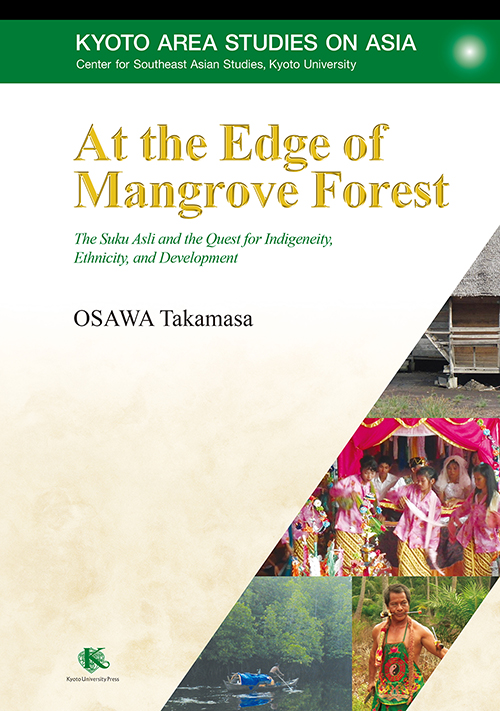ホーム > 書籍詳細ページ

At the Edge of Mangrove Forest
The Suku Asli and the Quest for Indigeneity, Ethnicity, and Development
菊変上製・238頁
ISBN: 9784814004348
発行年月: 2022/06
記述言語: 英語
発行元: Kyoto University Press & Trans Pacific Press
インドネシア・スマトラ島東岸に住むスク・アスリの人々――かつて彼らは,明確で固定的な民族的境界やアイデンティティを欠いたまま,オラン・ウタン(森の人)として知られていた。しかし2005年以降,彼らは「スク・アスリ」(先住民の意)という新しい民族名を名乗り,独自のアダット(伝統),固有のアイデンティティを持つ集団としての地位を主張し始めた。このアイデンティティの出現は何を意味するのか?
自律/自立を求める「先住民」の希望と,周縁の民を捕捉しようという国家の思惑のせめぎ合いの中で,歴史の中で培われてきた,人々の暗黙の言語化されない無意識のアイデンティティと「場所」とのつながりすなわち「土着性」が意識されていく。国家による先住民像を「体現」し,あるいはそれに抵抗し変革し,自らの地位を確立してきた民族誌を通じて,存在論,認識論としての「先住民性」を考察する意欲作。
自律/自立を求める「先住民」の希望と,周縁の民を捕捉しようという国家の思惑のせめぎ合いの中で,歴史の中で培われてきた,人々の暗黙の言語化されない無意識のアイデンティティと「場所」とのつながりすなわち「土着性」が意識されていく。国家による先住民像を「体現」し,あるいはそれに抵抗し変革し,自らの地位を確立してきた民族誌を通じて,存在論,認識論としての「先住民性」を考察する意欲作。
Takamasa Osawa is a social anthropologist who has studied indigenous communities
in Riau, Indonesia. In recent years, he has engaged in a transdisciplinary
project to empower indigenous communities in tropical peatland environments.
in Riau, Indonesia. In recent years, he has engaged in a transdisciplinary
project to empower indigenous communities in tropical peatland environments.
Acknowledgments
Abbreviations
Introduction: Positioning Suku Asli as Indigenous Peoples or an Adat Community
Chapter 1: Under State Politics:
State Formation, Ethnic Category, and Development Subjects
Chapter 2: Identity as Non-Muslims:
Orang Asli, Peranakan, and Ancestral Worship
Chapter 3: Consolidation of People and Place:
Foraging, Space, and Historical Continuity
Chapter 4: Establishment of an Organization:
Leadership, Power, and Government Intervention
Chapter 5: Manifestation of Tradition:
Adat, Performance, and Integration
Chapter 6: Creation of Homogeneity:
Agama, Buddhism, and Abstraction
Conclusion: The Ongoing Quest for Indigeneity
Glossary
Notes
References
Index
Abbreviations
Introduction: Positioning Suku Asli as Indigenous Peoples or an Adat Community
Chapter 1: Under State Politics:
State Formation, Ethnic Category, and Development Subjects
Chapter 2: Identity as Non-Muslims:
Orang Asli, Peranakan, and Ancestral Worship
Chapter 3: Consolidation of People and Place:
Foraging, Space, and Historical Continuity
Chapter 4: Establishment of an Organization:
Leadership, Power, and Government Intervention
Chapter 5: Manifestation of Tradition:
Adat, Performance, and Integration
Chapter 6: Creation of Homogeneity:
Agama, Buddhism, and Abstraction
Conclusion: The Ongoing Quest for Indigeneity
Glossary
Notes
References
Index











